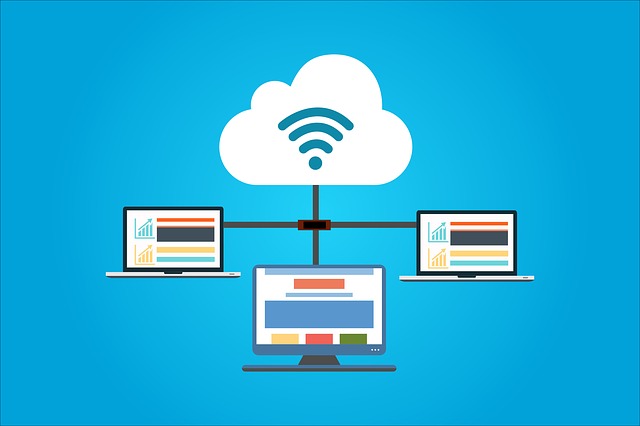Fiat para birimleri
Kripto Paralar
Sonuç bulunamadı: ""
Aradığınız terimle eşleşen bir sonuç bulamadık. Farklı bir terimle tekrar deneyin.
How to Run a Bitcoin Node?
What Is a Bitcoin Node?
The ecology of the Bitcoin network is a type of peer-to-peer and build of a series of consensus rules. In order to prevent transactional frauds and maintain the efficiency of decentralizing, Bitcoin nodes update data, broadcast and verify transactions in real-time. Because of the existence of Bitcoin nodes, centralized architecture will no longer be needed.
A bitcoin node is a computer that connects to the network to validate transactions fully or partially before adding them to the blockchain. Several nodes just like the referees of the Bitcoin network, setting rules and judging the validity of transactions. Bitcoin nodes will scan through the new transactions and share new blocks among themselves to keep each node up-to-date. This will technically eliminate the necessity of a central authority and ensures that there is no central authority controlling the blockchain. To some extent, the number of Bitcoin Nodes decided the decentralization and security of the Bitcoin network.

Are Bitcoin Nodes the Same as Miners?
The aim of Bitcoin nodes is to enforce Bitcoin rules and verify transactions. As for miners, they will run as a Bitcoin node as well, except for this, they also run extra mining software and hardware to solve complex mathematical problems, find a new block and load new transactions into it. A Bitcoin node doesn't need to be a miner, since it just needs to confirm the validity of the newly founded block and the transactions it contains.
What Are the Types of Bitcoin Nodes?
- Reference Clent(Bitcoin Core): Contains all the functions of wallet, miner, complete blockchain data, and routing network.
- Bitcoin full node: Contains complete blockchain data and the function of the network.
- Solo Miner: Contains all blockchain data and mining capabilities.
- Lightweight nodes: Contains wallets and routing with forwarding functions, which will handpick the important data when downloading or processing transactions.
Why Should I Run a Bitcoin Node?
As for the whole Bitcoin network, running more Bitcoin nodes can help to strengthen the stability of the whole environment, prevent attacks. As for individuals, you will obviously make contributions to preserving the Bitcoin network's decentralization. Also, you will obtain the following benefits:
- Enhance transaction privacy: Running your own node means you could create and broadcast transactions directly from the node, you don't need to use third-party wallet services to send or receive Bitcoins that may contain private information. You don't even need to use the block explorer to check your transaction status which may track your IP address and location.
- Improve transaction security: If you use your own bitcoin node to create a transaction, the possibility of private key exposure to the Internet will be reduced or eliminated. The Bitcoin node application, Bitcoin Core support Partially Signed Bitcoin Transaction (PSBT), which allows users to more easily sign transactions on a cold storage device and then broadcast the signed transaction by using your Bitcoin node.
- Investment decision support: Through running your own Bitcoin node, you will monitor the health of the Bitcoin blockchain in real-time, which means you will have the whole view of the Bitcoin ecosystem that may help you mank investment decisions.
With a Bitcoin node, since your node stores the entire Bitcoin blockchain, it is easier to identify counterfeit Bitcoins or forked coins, your node will automatically reject such kind invalid demands.
How much Does It Cost to Run a Bitcoin Node?
To run a Bitcoin node require hardware and software. As for hardware, the simplest way to run a Bitcoin node is to run it on a desktop or laptop computer. Also, a Bitcoin node should always be online and maintain connections with peers, which means it will cost the internet fee and electricity fee. If you want to maximize privacy and security, dedicated hardware is needed, for example, you can use Raspberry Pi, a small computer, about the size of a human hand. Also, an external drive that has enough memory to store the entire blockchain is needed. These two will cost extra money to run a Bitcoin node.
Can You Make A Profit Running a Bitcoin Node?
You do not receive any financial reward for running a Bitcoin node, it is not like Bitcoin mining. However, some cloud Bitcoin node service providers tend to incentivize users for running healthy nodes.
What Are the Procedures of Running a Bitcoin Node?
1. By using your own PC or laptop
As for hardware, since Bitcoin full nodes will download data online in real-time, that means your equipment should meet certain requirements:
- Desktop or laptop hardware running recent versions of Windows, Mac OS X, or Linux.
- 500 gigabytes of free disk space, accessible at a minimum read/write speed of 100 MB/s.
- 2 gigabytes of memory (RAM)
- A broadband Internet connection with upload speeds of at least 50 Kbps
6 hours a day that your full node can be left running. (You can do other things with your computer while running a full node.)
Then it comes to the software:
- Install a Bitcoin client: the most widely used software for setting up a Bitcoin node is Bitcoin Core, which supports operating systems, including Windows, Linux, and Mac OS. Depending on your programming expertise, you can either opt for Bitcoin Core Graphical User Interface (GUI) or Bitcoin Core Daemon. Click to visit Bitcoin.org to learn how to install different operating systems.
- Reconfigure your firewall settings and network configuration to allow the software to make outbound connections.
- Start to download the Bitcoin blockchain. It usually takes several days to download the whole blockchain.

2. By using pre-configured full node equipment
You can purchase dedicated pre-configured full node equipment. They come with an interface for you to manage the device and view data contained on it. In effect, this option outsources the grunt work of downloading and storing bitcoin's blockchain to an external device that is mobile and consumes less power compared to your own personal system.
3. Running a node in the cloud service
- Set up an account on either Amazon Web Services or Google Cloud.
- Create a virtual machine (VM) instance to speed up connection and syncing to the cloud from your machine.
- Download and install Bitcoin Core that your storage and processing resources are outsourced.

Bizi bulun:
X (Twitter) | Telegram | Reddit
CoinCarp Uygulamasını Şimdi İndirin: https://www.coincarp.com/app/
- Nexo Expands Card Services to Switzerland and Andorra Amid Growing Demand Başlangıç 2m
- AI and DeFi: How Intelligent Algorithms Are Reshaping the Financial Landscape Başlangıç 2m
- Enso facilitates $3.1 billion in onchain volume, ranking among top DeFi aggregators Başlangıç 2m
- Flare Fair launches, making DeFi more interactive and rewarding Başlangıç 2m